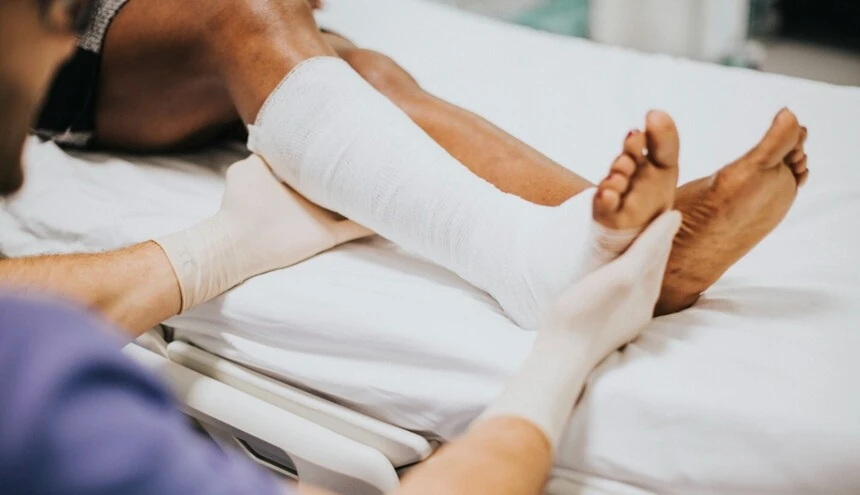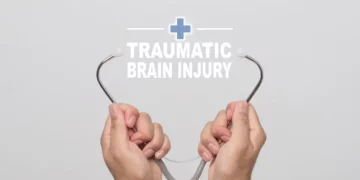Motorcycle accidents can cause a wide range of serious injuries, with broken bones being the most frequent and impactful.
Unlike car drivers, motorcyclists usually don’t get automatic no-fault insurance benefits. That means if you’re injured, you often must take legal action to get money for your medical bills, lost wages, and pain and suffering.
Sometimes, the other driver’s insurance will offer a fair settlement. In some cases, you might need to take the case to court with the help of the best motorcycle accident lawyer you can find.
Broken Bones: The Most Common Injury in Bike Accidents
Broken bones rank at the top of the list when it comes to motorcycle accident injuries. When a rider is ejected from the bike, inertia often sends them flying into hard surfaces like pavement, vehicles, trees, or poles.
Even with protective gear, such as boots, helmet, gloves, jacket, and protective pads, you can still get hurt. It’s nearly impossible to fully shield your arms and legs. In many cases, riders instinctively try to protect their heads and torsos by extending their limbs, which often results in fractures.
These fractures can range from minor cracks to severe breaks where bones shatter into multiple pieces. Orthopedic injuries like these vary greatly in severity. Some breaks might be manageable with just a cast and rest, but others require surgery involving metal plates, screws, or rods to stabilize the bone.
Even with treatment, recovery can be long and painful. Many victims can’t perform daily activities or return to work for weeks or months. Some fractures cause lasting complications like chronic pain or nerve damage. Sadly, some breaks never heal properly, and they sometimes lead to permanent disability.
Types of Bone Fractures You Might See
Bones are strong but can only take so much force. In a motorcycle crash, the force is often intense enough to cause several types of fractures. The main types include:
- Stable fracture: The bone breaks but stays aligned.
- Open or compound fracture: The bone breaks through the skin, increasing the risk of infection.
- Transverse fracture: The break is straight across the bone.
- Oblique fracture: The break runs diagonally.
- Comminuted fracture: The bone shatters into three or more pieces.
Other Serious Injuries from Motorcycle Accidents
While broken bones are very common, motorcycle accidents can cause a range of other serious injuries:
- Burns: Fires or contact with hot bike parts can cause anything from minor burns to deep tissue damage requiring skin grafts.
- Eye and nose injuries: Even with helmets, blunt trauma or flying debris can injure eyes and noses, risking vision and breathing.
- Internal injuries: Being thrown against the bike, the ground, or other objects around the accident scene can injure internal organs. These injuries may not be immediately visible but can be life-threatening.
- Loss of limbs: Severe trauma, like crush injuries or infections, can lead to amputation.
- Road rash: When skin scrapes against pavement, it causes painful abrasions that can become infected, leave scars, or even cause permanent nerve damage (depending on the degree of the road rash).
- Severe cuts and bruises: Impact from vehicles or objects often results in deep cuts requiring stitches and bruises that limit movement.
- Soft tissue and nerve damage: Tendons, ligaments, muscles, and nerves can tear or stretch, sometimes permanently.
- Spinal cord injuries: These can cause chronic pain, limited movement, or paralysis, depending on severity.
- Traumatic brain injuries (TBI): Though helmets reduce the risk, they do not eliminate it. The force of the impact may lead to brain injuries, which can range from concussions to severe, life-altering damage.
Disclaimer:
This guest article, published by Well Health Organic, is intended solely for informational and educational purposes regarding motorcycle accidents, broken bones, and other physical injuries. It does not constitute or substitute professional medical advice, legal counsel, or treatment.
Readers are strongly encouraged to consult with a licensed medical professional or legal expert before making any decisions based on the information provided in this article. Each person’s health condition and legal situation is unique, and personalized guidance is essential.
While this article may mention legal actions or injury claims, Well Health Organic and Author does not endorse or guarantee the accuracy, legal relevance, or outcomes of any referenced services (e.g., accident lawyers or healthcare treatments). Any mention of legal entities or third-party sources is for general awareness only and should not be considered as endorsement or legal advice.
We also do not guarantee the medical accuracy of guest content or the completeness of any opinions expressed by the author. This content has not been reviewed by a medical or legal board.
The experiences, symptoms, and outcomes described in this post may differ significantly based on individual cases. Do not rely solely on this information to make healthcare or legal decisions.
Additionally, while every effort has been made to provide accurate and up-to-date content, Well Health Organic does not guarantee the completeness or accuracy of the material. No warranty is expressed or implied. We are not liable for any direct or indirect damages or decisions made based on this article.
Images used, if any, are for illustrative purposes only and may not reflect actual medical situations, injury severity, or accident outcomes. Do not rely solely on images to assess injuries or medical care options.
We disclaim all liability for any direct, indirect, incidental, or consequential harm, injury, financial loss, or damage that may arise from the use or reliance on the content in this post.
If you believe any information is inaccurate or violates your rights, please contact us immediately on Phone call for review and resolution.
By continuing to read this article, you agree that Well Health Organic is not responsible for any outcomes resulting from actions taken based on this content.
















